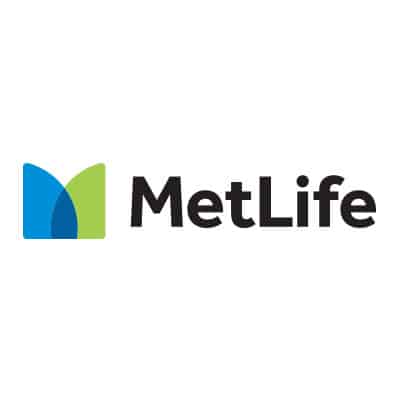
Invisalign aligners are a popular alternative to braces for correcting crooked teeth. They are clear, removable trays you wear over your teeth to gradually realign them into their proper positions. It’s a popular choice for adults who want to straighten their teeth but don’t want the hassle of wearing braces.
But does Metlife dental insurance cover Invisalign aligners? If so, how do you go about getting coverage? The answer depends on several factors, including what kind of plan you have and where you live. For example, some plans have a maximum number of trays they will cover per year—if your dentist exceeds this because of the severity of malocclusion, there will be an out-of-pocket cost. Other plans require pre-approval before any treatment begins—this usually entails sending in photos or x-rays showing evidence of the problem area so they can verify that it qualifies as eligible treatment under the terms of their policy. So, we’ve put together this handy guide to help you figure out if your Metlife plan includes coverage for Invisalign aligners and more.

Metlife offers orthodontic coverage, but it depends on whether or not orthodontic benefits are included in your plan. To check whether you have coverage for Invisalign and other orthodontic treatments, you must read the fine print in your contract. If they are, you may be able to use these benefits to cover not only Invisalign treatment but other types of dental work.
Suppose you do have dental insurance coverage and are considering Invisalign. In that case, you should be aware of a couple of clauses in your insurance contract that may potentially deny coverage for this treatment. If you’re unsure what is or is not covered, contact your insurance provider to find out what the level of coverage is, or we can check your insurance policy to verify whether Invisalign treatment is covered under your policy.
Non-covered service – An example of a non-covered service is if your plan says orthodontic treatment is a non-covered service. In this case, you will not be eligible for reimbursement or be able to receive Invisalign benefits.
Limitations and exclusions – Even if your plan covers orthodontic benefits, your plan may have a clause that limits those benefits to be used. Such as benefits only applying to patients under a specific age limit, a lifetime maximum benefit amount, coverage will cover only a certain percentage, or you may have to wait until a specific date before you qualify for orthodontic benefits through your plan.
Metlife Dental provides coverage for orthodontic care regardless of whether the provider is in-network or out-of-network. This means that you will have coverage no matter if the dentist is “in-network” or “out-of-network.
The only exception to this rule is if your insurance contract has an “In Network Only” clause. If that’s the case, you must see a dentist who is “in-network” because an “out-of-network” dentist would cause the insurance company to deny the claim.
Orthodontic services are a way to straighten your teeth. There are many different types of orthodontic treatment, but they all have the same goal: to straighten your teeth to form a beautiful smile. Here are some of the reasons why you may need orthodontic treatment:
Here are four different types of orthodontic services:
You can expect to pay between $2,000 and $8,000 on average for Invisalign without insurance coverage. The cost of Invisalign will depend on the condition being treated and where you live, as well as your orthodontist. If you have Metlife dental insurance, your insurance provider will cover a certain percentage of the cost and up to a lifetime maximum. Depending on your Metlife dental plan, Metlife insurance covers approximately 50% or about $500-$1500 of the treatment. During your consultation with the dentist, they will be able to give you an pre-treatment estimate of how much your treatment will be covered by insurance and what your out-of-pocket expense will be.

When looking for a Metlife insurance plan, you want to make sure that you are aware of the various features and benefits of different coverage amounts. Benefit amounts and exclusion criteria vary by plan. In order to position yourself for the maximum amount of orthodontic coverage, here are some requirements that you should look for when looking for dental coverage:
If you do not have dental insurance coverage, you can get coverage in one of two ways:
If you would like orthodontic treatment and a Metlife dental insurance plan does not cover you, there are still ways that you can get affordable treatment.
Payment plans – One option is to talk to your orthodontist or dentist about ways to make orthodontic treatment more affordable. They may allow a payment plan where you pay for treatment in installments, such as paying half of the total cost upfront and the balance over several months.
Third-party financing – Another alternative is using a third-party lender that offers 0% interest financing, such as LendingPoint or Carecredit. Financing your clear aligner treatment allows you to pay for your purchase in affordable monthly payments with no additional charges.
HSA or FSA – If you have a Health Savings Account or Flexible Spending Account, you can use either option to pay for your treatment. These accounts allow you to use pre-tax money that you can use for qualifying medical and dental expenses. Even if your Metlife insurance plan covers only part of your dental expense, you can use an HSA or FSA account to pay the remaining balance.
If you would like orthodontic treatment and a Cigna dental insurance plan does not cover you, there are still ways that you can get affordable treatment.
Payment plans – One option is to talk to your orthodontist or dentist about ways to make orthodontic treatment more affordable. They may allow a payment plan where you pay for treatment in installments, such as paying half of the total cost upfront and the balance over several months.
Third-party financing – Another alternative is using a third-party lender that offers 0% interest financing, such as LendingPoint or Carecredit. By financing your clear aligner treatment, it allows you to pay for your purchase in affordable monthly installments with no additional charges.
HSA or FSA – If you have a Health Savings Account or Flexible Spending Account, you can use either option to pay for your treatment. These accounts allow you to use pre-tax money that you can use for qualifying medical and dental expenses. Even if your Cigna insurance plan covers only part of your dental expense, you can use an HSA or FSA account to pay the remaining balance.
If you do not have dental insurance, knowing the exact treatment you need will help narrow down what type of coverage you will need. Once you have your plan selected, check with your dentist to see if there will be any additional costs that may be part of your treatment. In addition, before you begin orthodontic treatment, make sure that your orthodontic coverage is with an in-network provider, that you are not exceeding any lifetime limit, and that you have satisfied any waiting periods. By understanding the details of your dental plan, you can avoid paying for any unexpected out-of-pocket costs.
Working with an in-network dentist means your office will file the claim forms with your dental insurance provider, so you don’t have to worry about the claim process.
Sloan Creek Dental is in-network with most PPO dental insurance companies. Please get in touch with our office to see if we’re in network with your dental insurance.
To learn more about a covered treatment under your dental benefits plan, we have a team of experts who can help determine if you are eligible for orthodontic benefits. Please give us a call and speak to one of our insurance specialists.
As your local dentist near the Allen and Fairview areas, we are here to help you with any questions or concerns that you might have about achieving a healthy smile. If you want to learn more about orthodontic dental services, basic dental treatments, or have questions about an Invsailign procedure, feel free to contact us for a consultation appointment, and we’ll be happy to help with your dental care. To schedule your appointment, contact Sloan Creek Dental, and our friendly staff will be happy to assist you. You can reach us at our Fairview, TX dental office to schedule an in-person consultation with us today – 972-468-1440.
Our dental office is located in Fairview, Texas, and our patients visit us from across the surrounding areas, including Allen, Plano, McKinney, and Lucas.

We firmly believe that the internet should be available and accessible to anyone, and are committed to providing a website that is accessible to the widest possible audience, regardless of circumstance and ability.
To fulfill this, we aim to adhere as strictly as possible to the World Wide Web Consortium’s (W3C) Web Content Accessibility Guidelines 2.1 (WCAG 2.1) at the AA level. These guidelines explain how to make web content accessible to people with a wide array of disabilities. Complying with those guidelines helps us ensure that the website is accessible to all people: blind people, people with motor impairments, visual impairment, cognitive disabilities, and more.
This website utilizes various technologies that are meant to make it as accessible as possible at all times. We utilize an accessibility interface that allows persons with specific disabilities to adjust the website’s UI (user interface) and design it to their personal needs.
Additionally, the website utilizes an AI-based application that runs in the background and optimizes its accessibility level constantly. This application remediates the website’s HTML, adapts Its functionality and behavior for screen-readers used by the blind users, and for keyboard functions used by individuals with motor impairments.
If you’ve found a malfunction or have ideas for improvement, we’ll be happy to hear from you. You can reach out to the website’s operators by using the following email
Our website implements the ARIA attributes (Accessible Rich Internet Applications) technique, alongside various different behavioral changes, to ensure blind users visiting with screen-readers are able to read, comprehend, and enjoy the website’s functions. As soon as a user with a screen-reader enters your site, they immediately receive a prompt to enter the Screen-Reader Profile so they can browse and operate your site effectively. Here’s how our website covers some of the most important screen-reader requirements, alongside console screenshots of code examples:
Screen-reader optimization: we run a background process that learns the website’s components from top to bottom, to ensure ongoing compliance even when updating the website. In this process, we provide screen-readers with meaningful data using the ARIA set of attributes. For example, we provide accurate form labels; descriptions for actionable icons (social media icons, search icons, cart icons, etc.); validation guidance for form inputs; element roles such as buttons, menus, modal dialogues (popups), and others. Additionally, the background process scans all of the website’s images and provides an accurate and meaningful image-object-recognition-based description as an ALT (alternate text) tag for images that are not described. It will also extract texts that are embedded within the image, using an OCR (optical character recognition) technology. To turn on screen-reader adjustments at any time, users need only to press the Alt+1 keyboard combination. Screen-reader users also get automatic announcements to turn the Screen-reader mode on as soon as they enter the website.
These adjustments are compatible with all popular screen readers, including JAWS and NVDA.
Keyboard navigation optimization: The background process also adjusts the website’s HTML, and adds various behaviors using JavaScript code to make the website operable by the keyboard. This includes the ability to navigate the website using the Tab and Shift+Tab keys, operate dropdowns with the arrow keys, close them with Esc, trigger buttons and links using the Enter key, navigate between radio and checkbox elements using the arrow keys, and fill them in with the Spacebar or Enter key.Additionally, keyboard users will find quick-navigation and content-skip menus, available at any time by clicking Alt+1, or as the first elements of the site while navigating with the keyboard. The background process also handles triggered popups by moving the keyboard focus towards them as soon as they appear, and not allow the focus drift outside of it.
Users can also use shortcuts such as “M” (menus), “H” (headings), “F” (forms), “B” (buttons), and “G” (graphics) to jump to specific elements.
We aim to support the widest array of browsers and assistive technologies as possible, so our users can choose the best fitting tools for them, with as few limitations as possible. Therefore, we have worked very hard to be able to support all major systems that comprise over 95% of the user market share including Google Chrome, Mozilla Firefox, Apple Safari, Opera and Microsoft Edge, JAWS and NVDA (screen readers), both for Windows and for MAC users.
Despite our very best efforts to allow anybody to adjust the website to their needs, there may still be pages or sections that are not fully accessible, are in the process of becoming accessible, or are lacking an adequate technological solution to make them accessible. Still, we are continually improving our accessibility, adding, updating and improving its options and features, and developing and adopting new technologies. All this is meant to reach the optimal level of accessibility, following technological advancements. For any assistance, please reach out to